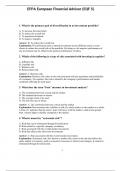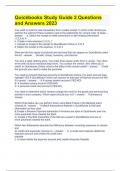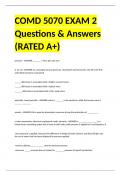Exam (elaborations)
EFPA European Financial Advisor (EQF 5) Practice Exam
- Course
- Institution
The EFPA European Financial Advisor (EQF 5) Practice Exam prepares financial advisors for certification under the European Financial Planning Association (EFPA). Topics include financial planning, investment strategies, risk management, and ethics. Candidates are tested on their ability to provide ...
[Show more]






